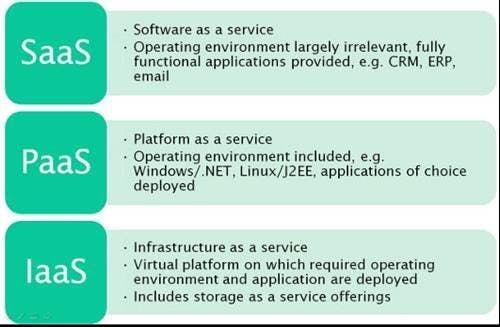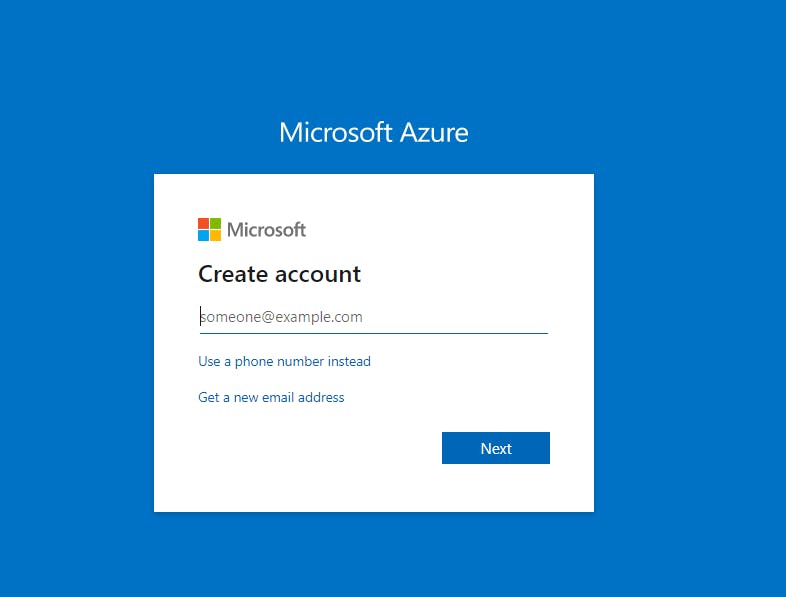Since we had a session on Azure and Tech Opportunities in Tech,we figured we'd follow up with an awesome article on the amazing tools in cloud computing. PS:If you didn't watch the thrilling event,no worries we got you,just click here
Let's start form the basics,what is cloud Computing?
10 years back, companies were storing everything in-house i.e on their own servers. But over the years with internet speed becoming better, people discovered a new way to store everything, the “Cloud” way! What is Cloud? To understand What is Cloud, let’s first understand why it came into the picture!
Before “Cloud”, companies were storing everything offline i.e hosting websites on their on-premise servers, and adding more servers whenever required. But, there were some problems with this kind of setup. What were these problems? Let’s discuss them using an example in this article:
You own a company which runs a very successful website and let’s imagine the “cloud concept” was not introduced at this time. Therefore your website was hosted on the on-premise servers. Seems normal, right? One fine day, you added a new feature to your website which became a hit overnight. Now, your traffic increased multi-folds and the inevitable happened, your website crashed! Woah! That hurts,right? Well, you obviously couldn’t have foreseen this, and even if you did, there was no way you could have spent and bought the required servers, in such a short time. Why? Well, servers are not cheap guys, they are very VERY expensive.
Let’s say you can afford these many servers, but are you sure about experiencing this much traffic every day? After you bought the servers and the next day your traffic dropped, what will you do with these servers now? They will be idle most of the time, and hence they become a bad investment on your part. Now with this example, let’s summarize the problems with the private model.
- This setup is expensive.
- Your servers will be idle most of the time.
3.Every machine is bound to fail one day, maintaining these many servers becomes a tedious task.
To handle these problems we had to come up with a new model of infrastructure(drum rolls please....voila)Introducing Cloud. With cloud computing, all these problems were solved! How?
- Put your data on Cloud Servers and you are set! No more buying expensive servers. Scalability! Your server capacity will scale up or scale down according to the traffic, that too automatically.
- Your cloud provider will manage your servers, hence no worries about the underlying infrastructure.
We now understand in this Azure Tutorial, why cloud computing was needed, let’s go ahead and understand what it is exactly?
Cloud Computing - The use of remote servers on the internet to store, manage and process data rather than a local server or your personal computer providing the following services.
Storage: Store large or small files on the cloud, which you can access on the go!
Compute :Such as Linux servers or web applications used for computation and processing tasks.
Networking :providing secure connections between cloud providers and your company
- Analytics :Such as visualizing telemetry and performance data.
So rather than doing these services on your personal computer or your private data center, you are doing it on the public cloud.
There are basically 3 categories in cloud computing:
SaaS (Software as a Service) It allows companies to use the software without purchasing them, which reduces the expenditure of the company drastically since they are already installed on the cloud servers they can be quickly deployed and therefore saves time.
PaaS (Platform as a Service) It allows developers to build applications, collaborate on projects without having to purchase or maintain infrastructure.
IaaS (Infrastructure as a Service) It allows companies to rent servers, storage space, etc. from a cloud provider.

Since there are so many benefits of Cloud Computing, we have a lot of Cloud Providers today who offer these services. The main being Microsoft Azure,Amazon Web Services(AWS) and Google Cloud Platform(GCP).
For this article,our main focus will be on Microsoft Azure.
What is Microsoft Azure?
Microsoft Azure is a cloud computing platform created by Microsoft which developers and IT professionals use to build, deploy and manage applications through their global network of datacentres.
Azure Services
Microsoft Azure provides various services that would help you in computing in one way or the other and these services are clubbed into domains. Here are a few notable domains: Compute It is used to process data on the cloud by making use of powerful processors which serve multiple instances at a time. Storage Services The storage as the name suggests is used to store data in the cloud with the ability to scale as and when required. This data can be stored anywhere. Database The database domain is used to provide reliable relational and non-relational database instances managed by Azure. Networking It lets you connect to the cloud and on-premise infrastructure and services to get a great user experience.
Azure Pricing
This might easily be one of the most popular reasons to learn Microsoft Azure and also use it. For people who are new and want to learn about the technology, Azure provides you free Credits which can be used to access Azure services for free for a short duration. This is sufficient to get one started. Azure is extremely flexible and offers a pay-as-you-go approach which can greatly help serve your business needs. Flexible pricing greatly supports up-scaling or down-scaling the architecture as per the needs.
Azure Certifications
Microsoft Azure aims to fill in the skill gap between the industry requirement and the resources available and to do that they have taken the following measures:
Introduce Roles Based Certifications
Provide Aligned Experience
- Make Certifications simple and discoverable
- Have more industry recognition to the certifications offered
In the process they have classified Azure Certifications into three major categories, which are: Azure Administrator Azure Developer Azure Solutions Architect
These certifications have levels where one has to first get an associate level certification and then use it as a stepping stone for Advanced level certification.
Azure Portal
Azure Portal as the name suggests is a single portal or a single junction that lets you access and manage all your applications at one place. It lets you build, manage and monitor everything from simple web apps to complex cloud applications in a single, unified console.
Features Of Azure Portal
Below are some of the features of functionalities offered by Azure Portal:
- Single Point Management
- Personalized Experience
- Access Control And Security
Service Amalgamation For Powerful Experience
More Visibility
Demo: Azure Portal Walkthrough
Step1:
First things first, one needs a free tier account or a paid account with Azure. All one needs to do is go to this link. Put in your details. And Azure offers you free services or credits that can be used for one-month duration. Note you will be expected to enter your credit or debit card details. But stay assured Azure won't charge you without your consent.
 Step2:
Step2:
Once you have an account you can log in and you will be directed to the portal:
In the image above, the left portion gives you one-click access to all the service domains. Next to it in blue color is the dashboard which is empty by default if any applications are up and running those can be pinned to it. The search bar at the top is where you can search for services and resources that don’t feature on the screen.
 Step 3:
Step 3:
If you click on the create a new resource tab you can create a resource which can be anything in Azure subscription like a virtual machine, application gateways, databases etc.
Step 4:
If you take a look at the top left corner. You can find the Cloud Shell which is a command line interface which lets you process your data using the command prompt, Notifications tab where all the notifications of your recent activities will be highlighted. The third Tab lets you explore portal settings whereas the fourth tab lets you look for help support provided by Azure.
This brings us to the end of this article(that was a handful🙌) I hope you enjoyed this article. If you are reading this,Congratulations!!!. You are no longer a newbie in Azure! The more you practice the more you will learn.
Be sure to subscribe to our page as we'll dive deeper into Microsoft azure in our consequent articles.Till then happy coding!!

